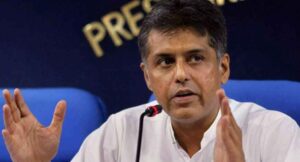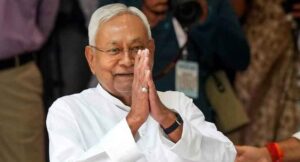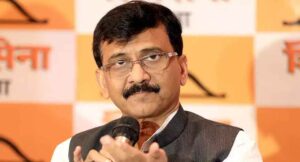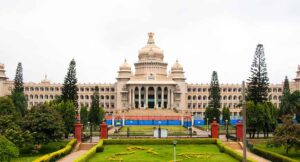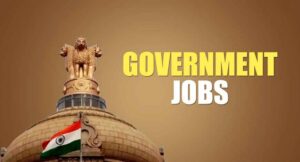The participation of women in Indian politics has been a subject of extensive discourse among scholars, especially given the paradox that while India has produced several influential women leaders, overall political engagement among women remains poor. Unlike many countries where the gender gap in political participation began narrowing in the 1990s, India saw this shift only in the 2010s.
While discussions on women’s participation often highlight the social and cultural biases that hinder their electoral success, less attention is given to how everyday women engage with the electoral process when opportunities arise. Their voting patterns, choices, and agency in shaping election outcomes remain under-explored. And, though political parties and women’s movements frequently celebrate women voters during elections, this recognition often treats them as a homogenous group, overlooking the intersections of caste, class, religion, and region that shape their political behaviour. Women’s support for Donald Trump in the 2016 U.S. elections, and their participation in the riots of the 1990s in India illustrate how women’s political engagement is far more complex and requires in-depth understanding.
It is within this context that Rajeshwari Deshpande’s study, ‘Shaping of the Woman Constituency in Indian Elections: Evidence from the NES Data’, becomes significant. Her analysis of National Election Studies (NES) data sheds light on the increasing voter turnout among women and their growing participation in the political sphere. By examining how women vote and whether their choices are influenced primarily by gender or by other social identities, her research provides a nuanced understanding of the evolving role of women in Indian elections. Her findings help to understand whether we are closer to shaping a women’s constituency in Indian elections. This study offers critical insights into the gendered dimensions of Indian elections, highlighting key patterns, contradictions, and challenges in women’s political agency and its broader socio-political implications.
Mere beneficiaries or active agents?
As mentioned earlier, it was only in 2010 that there was a significant increase in the share of women who voted; and all political parties sought to capitalise on this shift by introducing policies and schemes specifically targeting women. However, these policies often frame women as passive beneficiaries rather than political agents. Welfare programs like Ujjwala and the Pradhan Mantri Awas Yojana were pivotal to the Bharatiya Janata Party’s (BJP) victory in the 2019 Lok Sabha elections, while schemes like ‘Ladli Behna’ and ‘Ladli Laxmi’ were credited for the party’s success in Madhya Pradesh. These initiatives reinforce the notion of women as dependents, with political leaders positioned as benevolent providers rather than recognising women as autonomous decision-makers.
Deshpande argues that high voter turnout does not necessarily translate to real political power. For years, women were considered marginal participants in politics, with efforts made to carve out a ‘non-political’ political constituency for them. Despite their growing presence at the polls, political parties and media continue to frame their votes as driven by welfare benefits. Analysing NES data helps assess whether the rise in women voters signals real political agency or mere surface-level inclusion.
Beyond voting
While the increasing turnout of women voters in the 2024 Lok Sabha elections is noteworthy, voting is not the only form of political participation. Participation in rallies, campaigns, political affiliations, and policy advocacy also indicates political involvement. In these areas, women still lag behind men. Only 14% of women report seeking advice from their spouses on voting decisions — indicating growing agency —but this remains significantly higher than men’s. This suggests that despite increased voter participation, deeper political engagement faces social and structural barriers.
One explanation scholars offer for the increased turnout of women is the self-empowerment hypothesis, which suggests that rising literacy rates and employment opportunities have empowered women to vote independently. Efforts by the Election Commission to ensure women’s voter registration could also be attributed to the increased turnout.
However, the author challenges this explanation, pointing out two critical contradictions: women’s overall workforce participation remains low, weakening the argument that economic independence is driving higher turnout. Additionally, the proportion of registered female voters compared to male voters remains imbalanced, indicating that fewer women are being registered.
An alternative explanation for the increased women voter turnout could be the large-scale male migration of men contributing to higher turnout among women in States traditionally considered socially and economically ‘backward’.
These trends highlight that while turnout has increased, broader political participation remains limited.
Other identities
Women’s voting behaviour in India is not driven solely by gender identity but is also deeply shaped by regional, caste, and class dynamics. The NES data highlight that State-specific political and social contexts significantly influence electoral choices, undermining the idea of a unified, pan-Indian women’s voting bloc. Instead, women’s voting preferences are molded within the broader framework of their community identities.
State-level variations demonstrate this complexity. For instance, in States such as Tamil Nadu, Kerala, and West Bengal, where electoral politics have historically been shaped by strong regional parties, women’s preferences are often aligned with regional political movements rather than national gender-based voting trends. Caste and class divisions further complicate this narrative. The BJP’s voter base has traditionally been skewed toward urban, upper-class, and upper-caste groups, while Congress has drawn more support from the urban poor and marginalised communities. However, this alignment is also not absolute — many women, particularly from lower socioeconomic backgrounds, continue to vote based on the interests of their communities rather than on a broader gender-based agenda.
Women’s support for different parties
NES data indicate that Congress has historically maintained a gender advantage, consistently receiving more female support than male. This trend continued in 2024, except in 2014, when the party suffered a nationwide decline. Left parties also had a gender advantage, but their declining influence has diminished this effect on the national stage.
The BJP, in contrast, has faced a gender disadvantage, with fewer women voting for the party compared to men. However, this gap has been narrowing. Previously, the gender gap in BJP support exceeded 20%, whereas in 2024, it reduced to approximately 7%. The BJP’s targeted outreach to women has contributed to this shift, though much of its support still comes only from welfare beneficiaries. Even within this group, men support the BJP more than women.
Region-specific variations further complicate women’s support for the BJP. In some non-BJP-ruled States, more women than men voted for the party, despite a lack of increased female voter turnout. Conversely, in other States, women showed a stronger preference for opposition parties, creating an uneven gender gap. This suggests that while the BJP has made inroads among female voters, gender alone does not define women’s electoral choices — other intersecting identities and political contexts remain crucial.
The data from past elections highlight three key trends in women’s political participation in India. First, while women’s voter turnout has steadily increased, their overall political engagement beyond voting remains lower than men’s. Second, women’s voting patterns and political involvement are not just shaped by gender identity; factors such as caste, class, and regional influences also play a significant role. Third, despite targeted outreach, the BJP has historically faced a gender disadvantage, with more men than women supporting the party. These developments indicate that we are still far from the formation of a distinct women’s constituency in Indian politics, as their electoral choices remain intertwined with broader socio-political factors. The Hindu

